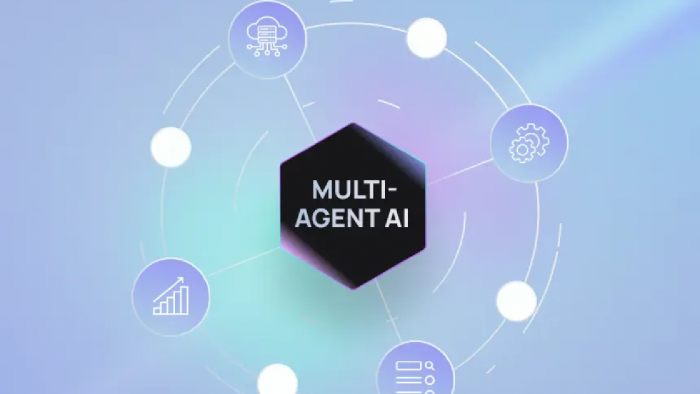The rapid expansion of digital technology has revolutionized industries worldwide. However, as businesses, governments, and individuals become more reliant on digital networks, the risk of cyber threats has also increased dramatically. Cybercriminals are becoming more sophisticated, utilizing advanced tactics to breach systems, steal data, and disrupt operations. Traditional cybersecurity measures, while still necessary, are struggling to keep up with these evolving threats.
Artificial intelligence (AI) has emerged as a game-changer in cybersecurity. AI-driven security solutions can process vast amounts of data, detect anomalies, and respond to threats in real-time, far beyond what human analysts can accomplish alone. As organizations work to fortify their digital defenses, AI is playing a critical role in identifying vulnerabilities, preventing cyberattacks, and automating incident response. For cybersecurity professionals, staying ahead of these developments is essential, requiring ongoing education and expertise in intelligence analysis and security strategies.

How AI is Revolutionizing Cybersecurity
Traditional cybersecurity methods, such as firewalls, antivirus software, and manual threat analysis, are no longer sufficient in today’s rapidly evolving threat landscape. Attackers are using automated tools, machine learning algorithms, and AI to exploit weaknesses in security systems. It has created an urgent need for smarter, AI-powered security solutions that can analyze network traffic, identify suspicious activity, and respond instantly to potential threats.
AI enhances cybersecurity by detecting patterns that humans might overlook. Unlike conventional security measures that rely on pre-programmed threat signatures, AI can learn from real-time data, continuously improving its ability to recognize new attack strategies. It makes it particularly effective in preventing zero-day attacks and cyber threats that exploit vulnerabilities before security patches can be applied.
As AI-driven security tools become more advanced, cybersecurity professionals must develop a deeper understanding of AI’s capabilities and limitations. Many organizations are seeking experts who can leverage AI to strengthen their cybersecurity infrastructure. For those looking to build or advance their careers in this field, pursuing an online masters degree in intelligence studies provides the necessary training in cybersecurity strategies, threat analysis, and AI applications in security.
These programs equip students with the technical and analytical skills needed to combat cyber threats effectively. They cover key areas such as data analytics, cyber intelligence, and risk assessment—ensuring graduates are prepared to address complex cybersecurity challenges in both the public and private sectors. As AI continues to shape the future of digital security, having expertise in intelligence studies will be a crucial advantage for professionals in this field.
AI-Powered Threat Detection and Prevention
One of the most significant benefits of AI in cybersecurity is its ability to detect threats as they emerge. Unlike traditional security systems that rely on predefined rules, AI-driven solutions use machine learning to analyze network behavior and recognize unusual patterns. It allows security teams to identify potential cyberattacks before they can cause damage.
For example, AI-powered threat detection systems can monitor login attempts, flag suspicious IP addresses, and track irregular user behaviors that might indicate a security breach. By analyzing vast amounts of data in real time, AI enables organizations to take a proactive approach to cybersecurity rather than reacting after an attack has occurred.
Cybercriminals frequently use deceptive tactics like phishing emails, malicious software, and ransomware to infiltrate systems. AI-driven security tools can significantly reduce these risks by automatically scanning incoming emails, detecting fraudulent messages, and blocking malicious attachments before they reach users.
Additionally, AI can identify malware by analyzing the behavior of files rather than just relying on virus definitions. This proactive approach is especially useful for preventing ransomware attacks, where hackers encrypt critical files and demand payment for their release. By using AI to detect and neutralize threats early, organizations can avoid data loss and operational disruptions.
The Role of AI in Automated Incident Response
Speed is crucial in cybersecurity. The longer a threat goes undetected, the more damage it can cause. AI-powered incident response systems help organizations react to cyber threats in real time by automatically analyzing and mitigating attacks.
For instance, if AI detects an unauthorized login attempt or data breach, it can immediately lock affected accounts, alert security teams, and take preventive measures—without waiting for human intervention. The rapid response reduces the impact of cyberattacks and ensures that security teams can focus on strategic threat management rather than manual incident handling.
Human error remains one of the biggest vulnerabilities in cybersecurity. Employees may accidentally click on phishing links, use weak passwords, or fail to recognize suspicious activities. AI helps mitigate these risks by providing automated security recommendations, enforcing multi-factor authentication, and detecting anomalies in user behavior.
By integrating AI with security protocols, organizations can reduce reliance on human decision-making in critical situations, minimizing the risk of oversight and enhancing overall security measures.
Ethical Concerns and Challenges of AI in Cybersecurity
While AI is a powerful tool for cybersecurity, it can also be exploited by cybercriminals. Hackers are now using AI to develop more sophisticated attacks, such as AI-generated phishing emails, deepfake scams, and automated hacking techniques.
As AI-driven attacks become more prevalent, security professionals must stay ahead by continuously improving AI-based defenses. It includes developing countermeasures that detect AI-generated threats and ensuring that security algorithms remain adaptable to new attack strategies.
AI models are not perfect. One major challenge is the risk of false positives, where legitimate activities are mistakenly flagged as threats. It can lead to unnecessary security restrictions, affecting business operations and user experience.
To address this issue, organizations must ensure that AI-driven security systems are trained on diverse datasets and regularly updated to reduce bias and improve accuracy. Human oversight is also essential in refining AI-based security measures to strike a balance between protection and operational efficiency.
Future Trends: AI and the Evolving Cybersecurity Landscape
As AI technology continues to advance, we can expect to see even more innovative cybersecurity solutions in the future. Some emerging trends include:
- Predictive Analytics – AI models that anticipate cyber threats before they occur, allowing organizations to implement preventive measures.
- Behavioral Biometrics – Advanced authentication methods that use AI to analyze user behavior patterns, enhancing security beyond traditional passwords.
- Automated Security Frameworks – AI-driven security infrastructures that adapt dynamically to evolving cyber threats, reducing the need for manual intervention.
As these technologies become mainstream, cybersecurity professionals must continue learning and adapting to stay ahead of cybercriminals.
AI is transforming the field of cybersecurity, offering faster threat detection, automated incident response, and enhanced defense strategies. However, as AI-driven security tools evolve, so do the tactics used by cybercriminals. It makes ongoing education and expertise in cybersecurity and intelligence studies more important than ever.
As AI continues to shape the future of digital security, having a strong foundation in intelligence analysis and security strategies will be essential for staying ahead of emerging threats.
Once organizations embrace AI and invest in cybersecurity education, they can build a more secure digital future, one that keeps data, systems, and individuals protected from cyber threats.
Post Comment
Be the first to post comment!





